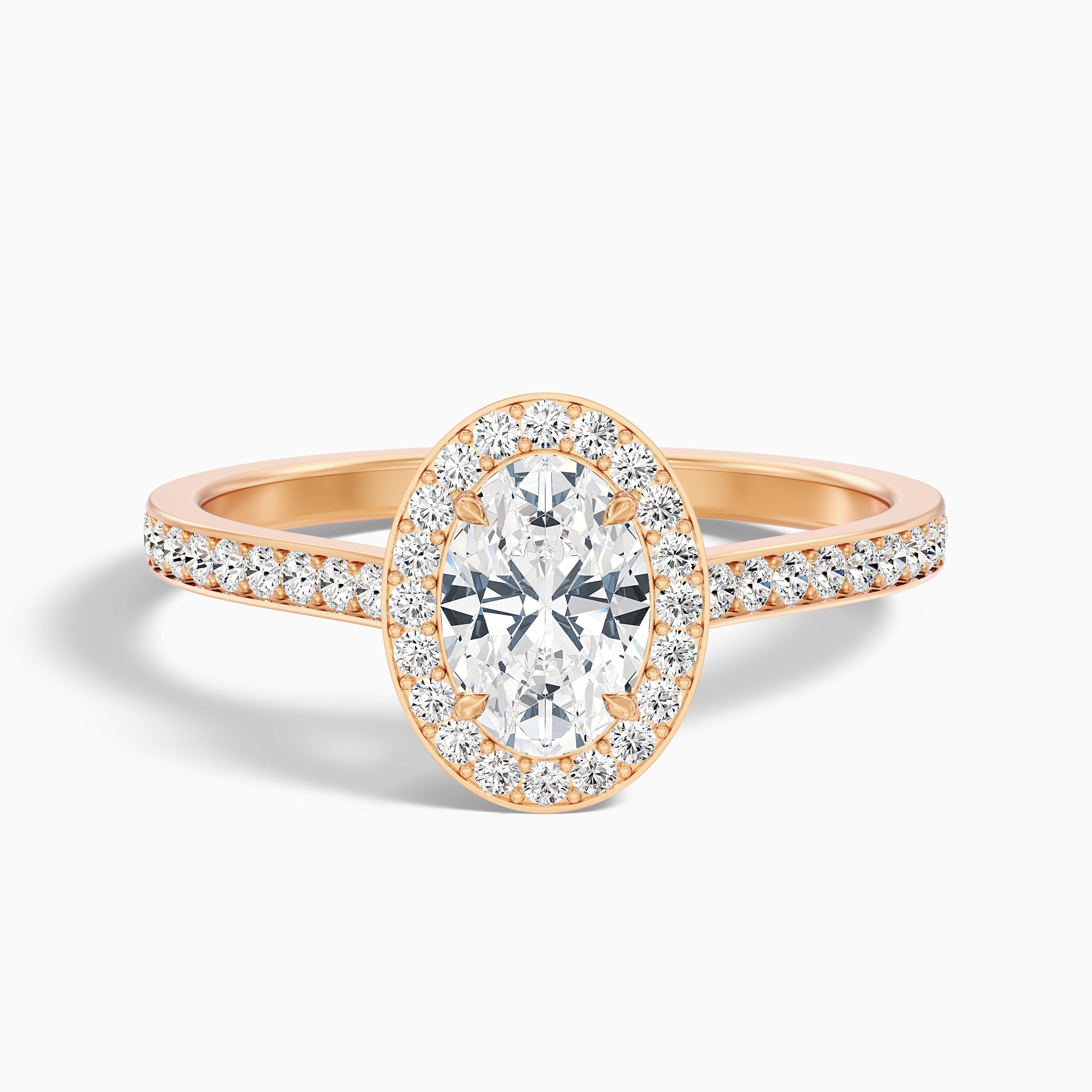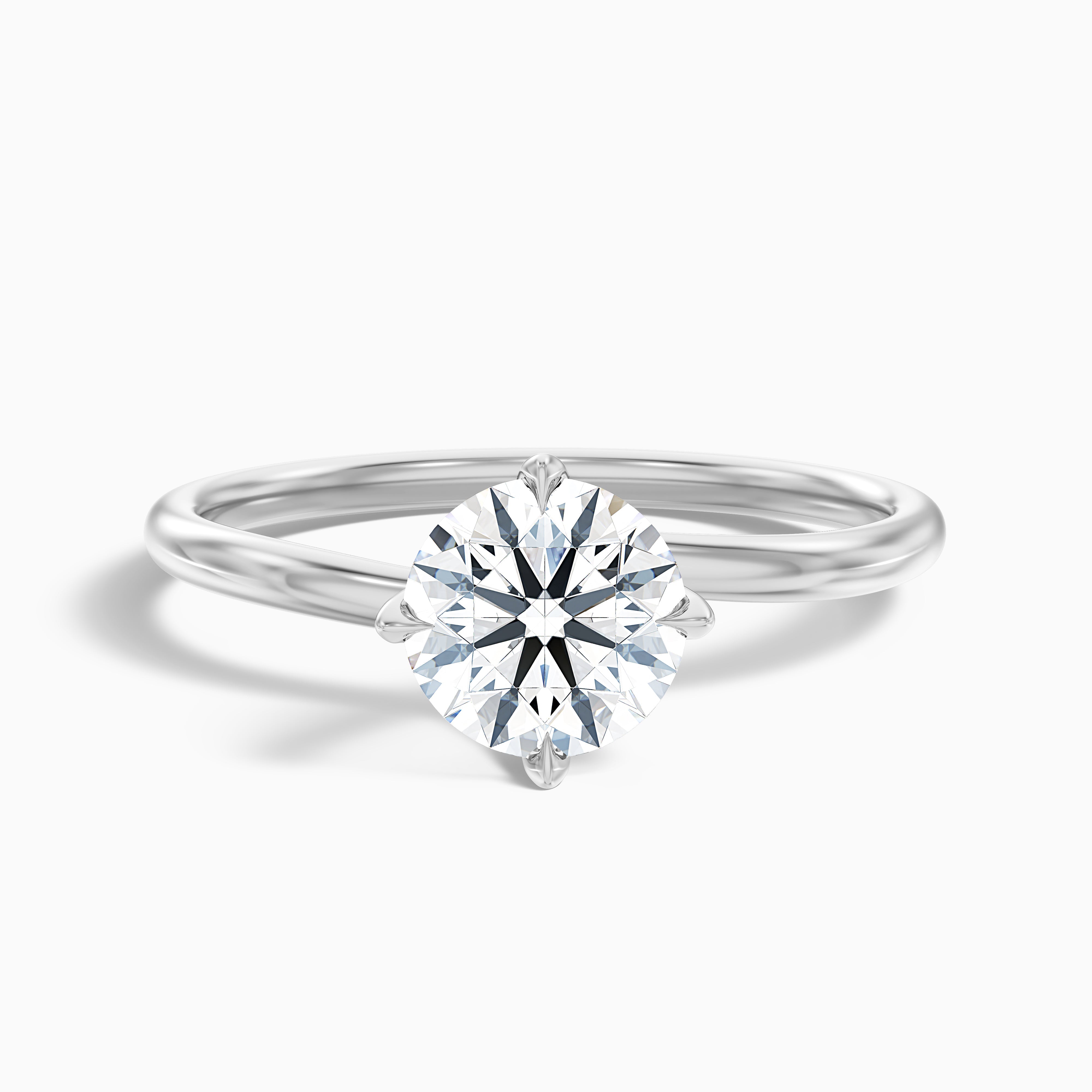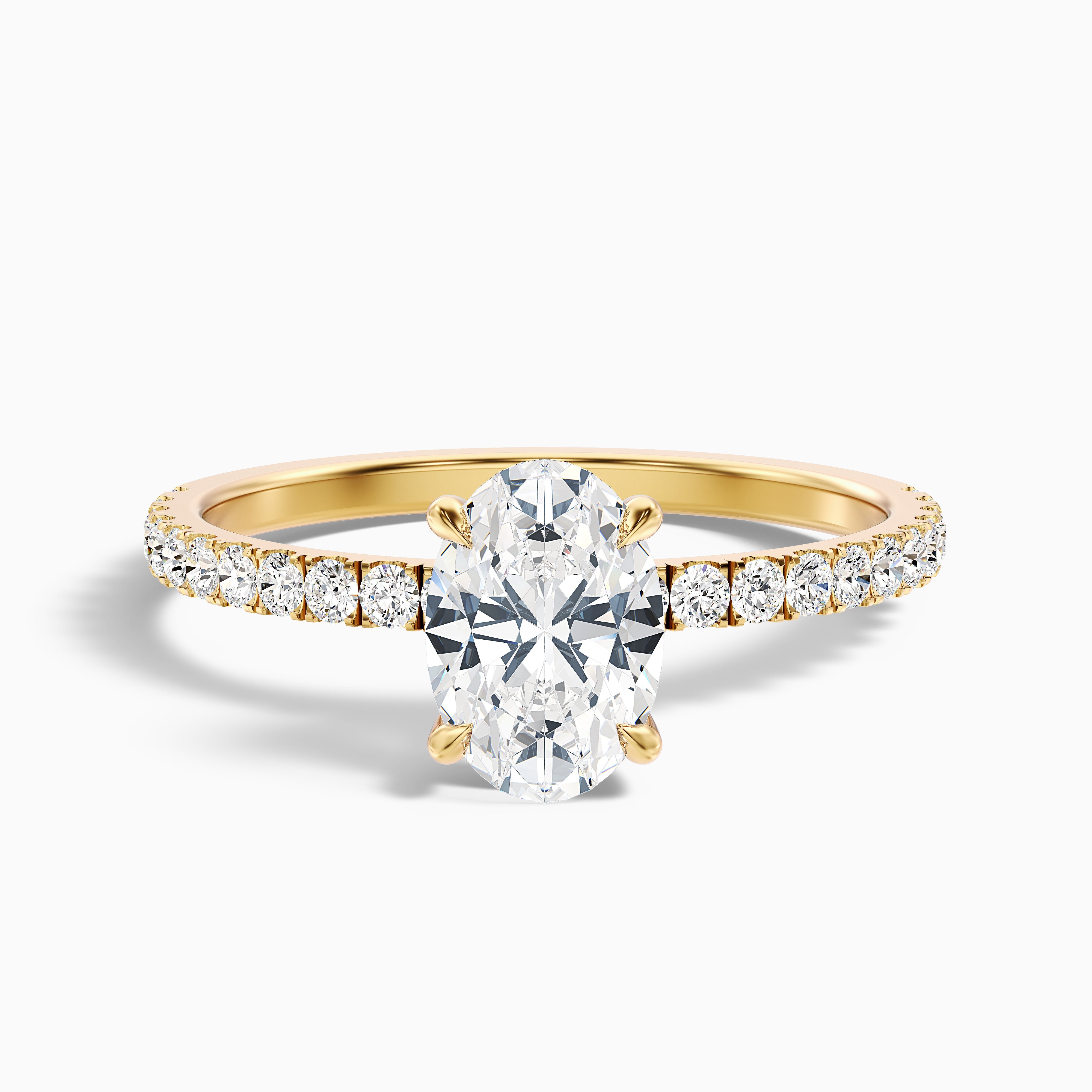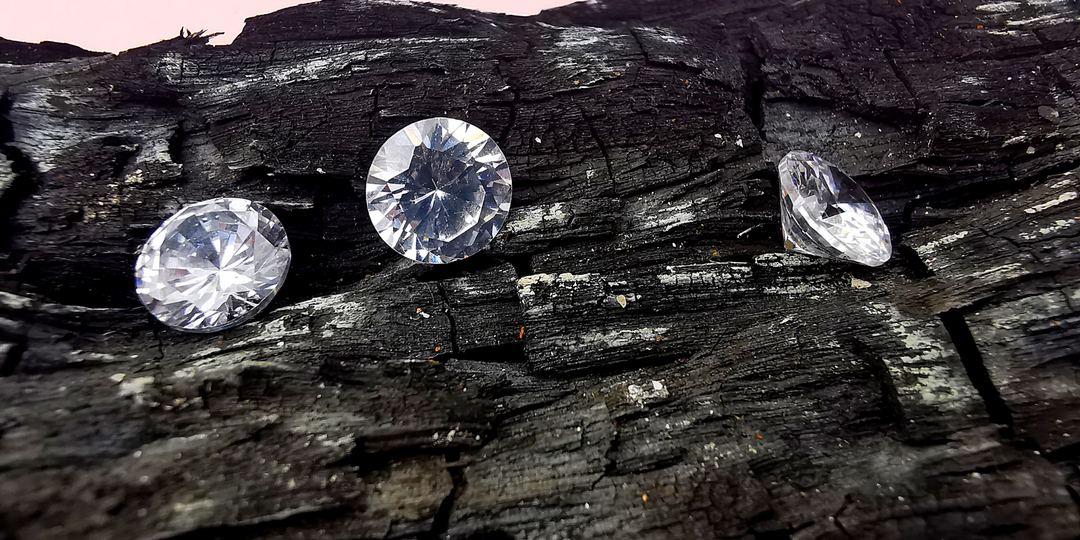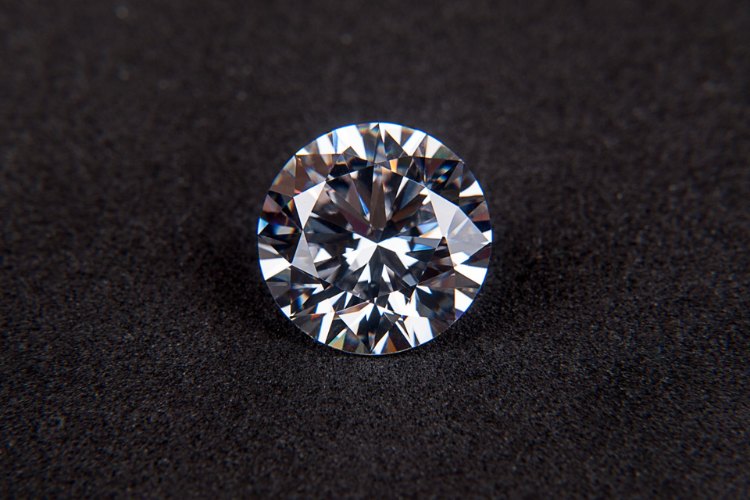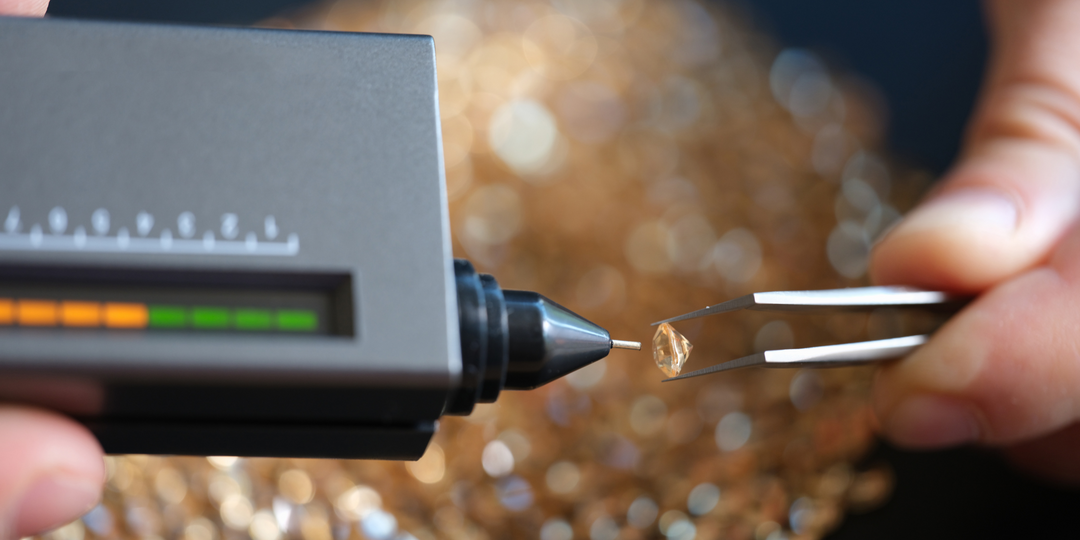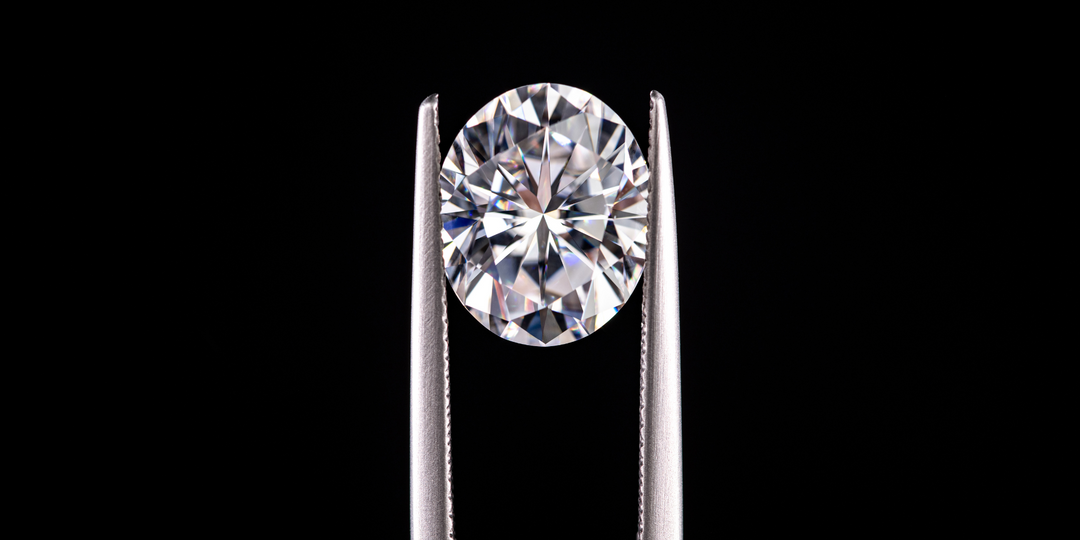Round Vs. Oval Diamonds: How to Choose the Perfect Shape for You

Diamond selection is a big decision, and the shape is one of the first things you'll consider. Two of the most popular choices are round and oval diamonds. Both offer stunning brilliance, but they have distinct personalities. This guide will break down the key differences between these two shapes, helping you decide which one is the perfect fit for your style and preferences.
The Basics of Round Diamonds

The round brilliant cut is the undisputed king of diamonds. It's the most popular shape by far, and for good reason. It's designed to maximize brilliance and fire, creating that brilliant sparkle we all associate with diamonds. This is achieved through a precise arrangement of 58 facets, carefully calculated to reflect light to the observer's eye.
The round brilliant has a long history of refinement, with cutters perfecting the proportions and angles over centuries. This precise development has resulted in a cut that's truly optimized for light performance. When you see a round brilliant sparkling, you're witnessing the result of centuries of craftsmanship. The symmetry of the round shape also makes it a classic and timeless choice, suitable for any setting or style. It's a safe bet if you want something that will always be in fashion.
The Basics of Oval Diamonds

The oval cut is a modified brilliant cut, meaning it shares many of the round brilliant's light-performance characteristics but with a distinct elongated shape. This shape gives it a unique elegance and a few key advantages. Lazare Kaplan was the one who pioneered this cut.
The oval's elongated form can make it appear larger than a round diamond of the same carat weight, a definite plus for many buyers. It also has a flattering effect on the finger, making it appear longer and more slender. While round diamonds are symmetrical in every direction, ovals have a length-to-width ratio that can vary, giving you different looks. Some ovals are more elongated, while others are closer to round. This variation allows for personal expression and finding the perfect balance for your taste.
Characteristics of Oval Cut Diamonds
Let's dive deeper into what makes oval diamonds unique:
Length-to-Width Ratio
The ratio determines how elongated the oval shape appears. A ratio between 1.30-1.40 creates a more rounded oval shape which is sometimes referred to as a "rival." while the 1.40-1.50 ratio range creates a perfect oval shape with a balanced length and width. and at the end 1.50 and above ratio range creates a more elongated oval shape which can appear larger but may have a less desirable bow tie.
Bow Tie Effect
Just like we discussed above the 1.50 and above ratio range exhibits a less desirable bow tie. The bow tie effect is caused by the way light interacts with the diamond's facets. This is a dark area that can appear in the center of some ovals.
A slight bow tie is often acceptable as they will not affect brilliance much but a very dark one can affect the diamond's brilliance. It's a common characteristic of elongated diamond shapes like ovals, marquise, and pears. So we always provide a great quality oval cut diamond with a less bow tie effect so that brilliance will be maintained forever.
Brilliance and Fire
Here brilliance refers to the white light reflected to the observer from the diamond. so it is the overall brightness and sparkle of the stone. Oval cuts are modified brilliant cuts meaning they can share a similar faceting pattern with the round brilliant cut which is designed to maximize light return.
Fire refers to the dispersion of white light into spectral colors also called the rainbow effect. It is the flashes of color you see in a diamond. A well-cut oval diamond will have a good fire. So we always suggest the best cut for the diamond to get the best value of your investment.
Comparing Round and Oval Diamonds
Now for the main event: how do these two shapes compare?
Shape and Appearance
The most obvious difference between these two cuts is the shape of the diamond. Round diamonds are classic and symmetrical, while ovals are elongated and elegant. A round diamond is like a classic little black dress, always in style, and the oval is like a stylish jumpsuit that is modern and eye-catching.
Brilliance and Sparkle
Round brilliant is made only for maximum brilliance and they generally outsparkle other shapes. However, as we have already mentioned above, well-cut oval diamonds can still have excellent brilliance and fire. The difference is often immediately obvious or noticeable. You can imagine a disco ball which is round versus a perfectly polished raindrop which is oval. Both catch the light beautifully but in slightly different ways.
Illusion of Size
This is where ovals have an edge on round diamonds. because of their elongated shape, they tend to look larger than round diamonds of the same carat weight. This can be a significant advantage if you are looking for a visually impressive or larger stone.
Cost and Value
Round brilliant diamonds are usually more expensive per carat than oval diamonds. This is due to higher demand and the greater amount of rough diamonds that are lost during the cutting process to achieve the round shape's perfection. This makes oval a great option if you are looking for value.
Pros and Cons of Each Shape
Round Diamonds
-
Pros:
-
Maximum Brilliance and Fire: The round brilliant cut is scientifically designed to maximize light return, giving you the most sparkle possible. This is its biggest selling point.
-
Timeless and Classic: The round shape has been popular for centuries and will never go out of style. It's a safe and elegant choice for any setting or style.
-
High Resale Value: Due to their popularity and consistent demand, round diamonds tend to hold their value well, making them a good investment.
-
Easier to Grade: Because of the standardized cutting parameters for round brilliants, it's easier to assess their cut quality, making it simpler to compare different stones.
-
Cons:
-
Most Expensive Per Carat: Achieving the optimal proportions and symmetry of a round brilliant requires more rough diamonds to be cut away, which increases the cost per carat.
-
Can Appear Smaller: Compared to other shapes like ovals or marquises, round diamonds can appear smaller for the same carat weight.
Oval Diamonds
-
Pros:
-
Appears Larger: The elongated shape creates the illusion of greater size, making it a great choice if you want a visually impressive stone without necessarily increasing carat weight.
-
Flattering Shape: The oval shape can make fingers appear longer and more slender.
-
Unique and Elegant: While still a classic choice, the oval offers a more distinctive look than the ubiquitous round.
-
Generally More Affordable: Because less rough diamond is lost during the cutting process, oval diamonds are usually more affordable per carat than round brilliants.
-
Versatile Setting Options: The oval's shape lends itself well to various setting styles, from solitaires to halos and three-stone rings.
-
Cons:
-
Bow Tie Effect: As we’ve discussed, some oval diamonds exhibit a dark area across the center known as the bow tie effect. While a slight bow tie is often acceptable, a prominent one can detract from the stone's brilliance. Careful inspection is key.
-
Cut Quality Can Vary: Since there's no official cut grading system for ovals like there is for round brilliants, it's important to carefully assess the stone's proportions, symmetry, and light performance. It's best to consult a trusted jeweler.
-
Can Collect Dirt: The elongated shape and the way it sits in some settings can sometimes make it more prone to collecting dirt than a round diamond. Regular cleaning is important.
Conclusion
Both round and oval diamonds offer breathtaking beauty and sparkle, each in their way. The round brilliant reigns supreme in terms of pure light performance, while the oval offers a flattering shape and the illusion of greater size. It's not about which is 'better,' but rather which best complements your style and preferences. Whether you choose the classic brilliance of a round or the elegant allure of an oval, you're sure to find a diamond that will be treasured for a lifetime.

